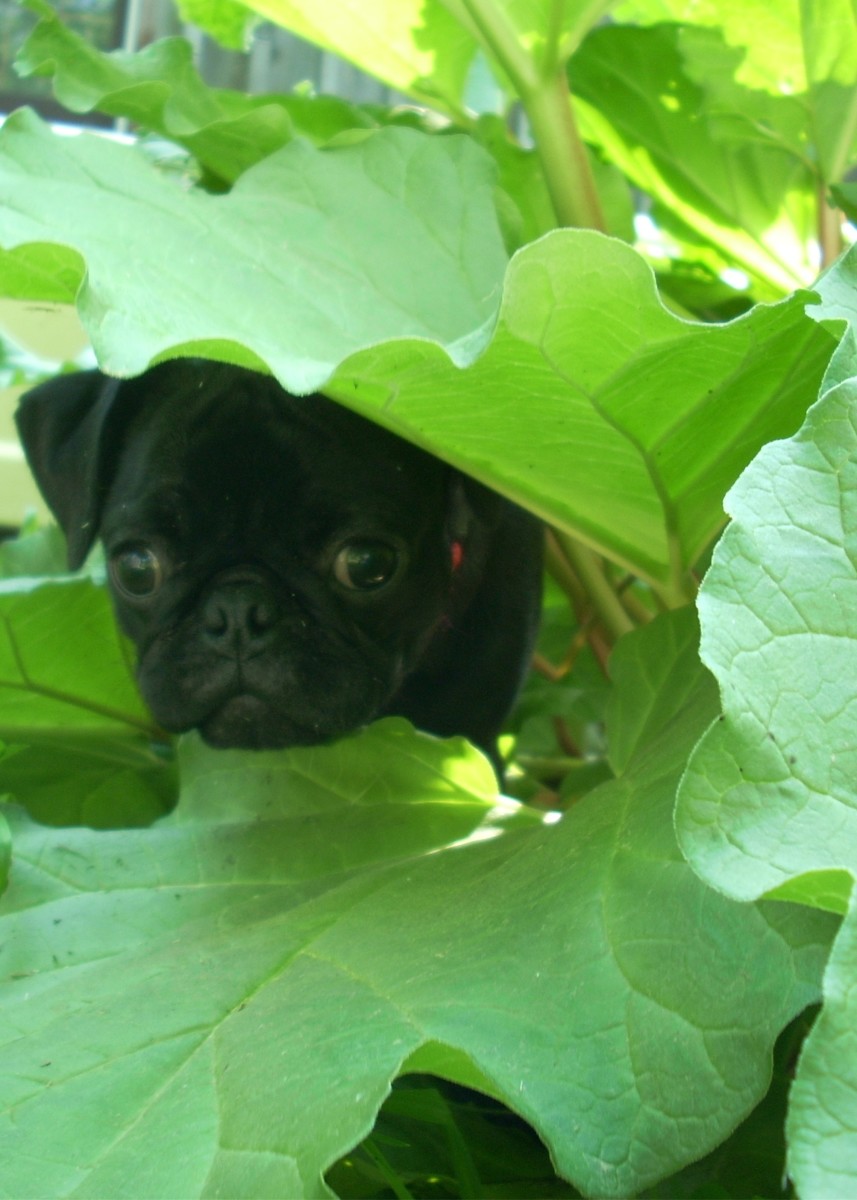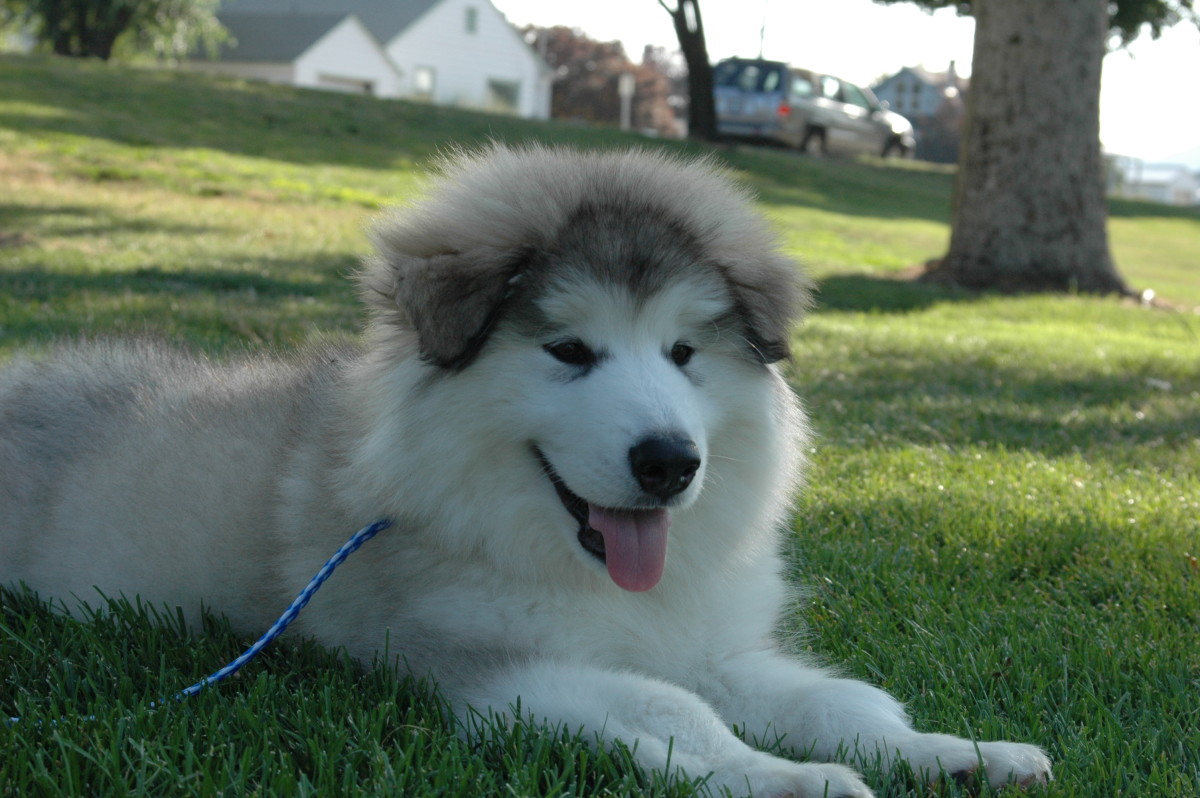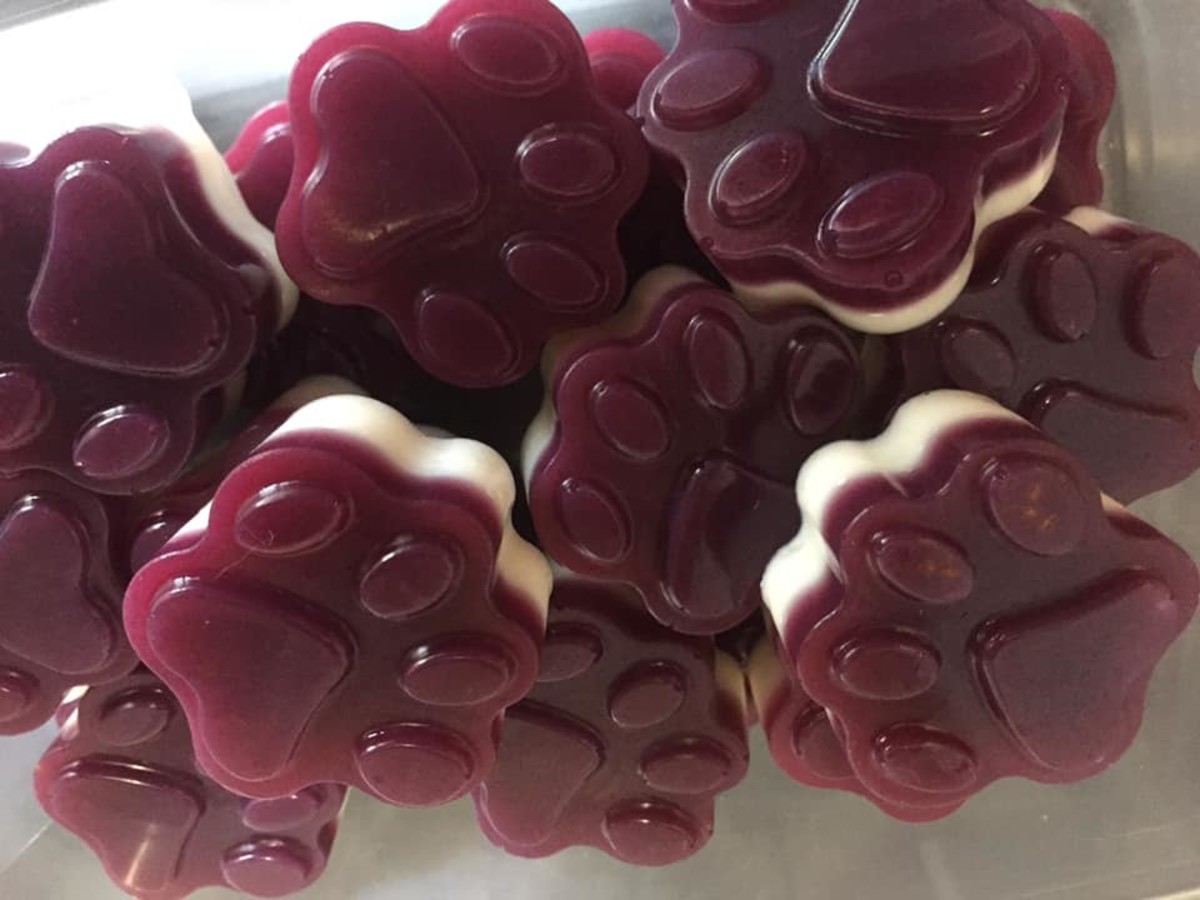- HubPages»
- Pets and Animals»
- Dogs & Dog Breeds»
- Dog Food
Should Dogs Eat Chocolate?

Chocolate Poisoning and Your Dog
Feeding a dog chocolate is not the right thing to do - ever. Not all dogs are the same; breed, age, activity levels and the amount of chocolate consumed by the dog will all contribute to the toxicity level that will affect the dog. I know it can be difficult to resist sharing your chocolate treats with your best friend.....
I know how it is.....
How many times have you been eating those chocolate chip cookies with milk when you look over and see those soulful puppy dog eyes staring at you? While the saddest begging look creeps across his face and he lets out the most pathetic whimper. A dog wanting chocolate can weaken the most stoic dog owner!
Don't give in, ever. You must stay firm.
Chocolate is poison to your dog and can be fatal!
Don't Let Your Dog Get the Taste for Chocolate!
First and foremost, it must be said that dogs must NOT eat chocolate. No matter how pathetic he looks at you, no matter how much he whines, let me repeat....
Dogs must NOT eat chocolate.
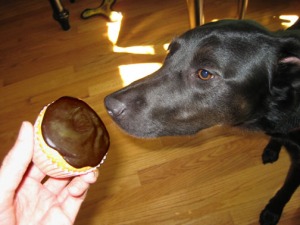
Do NOT Do What This Pet Owner Appears to Be Doing!
Keep ALL forms of chocolate out of their reach and locked away at all times.
Keep in mind that once dogs have tasted chocolate, they want more. The problem, according to veterinary experts, is that dogs have a sweet tooth and eating just a speck of chocolate leads a dog to crave more. They become addicted to chocolate very easily.
It can mean that your dog will jump at any opportunity to get any type of chocolate and chocolate can kill your dog.
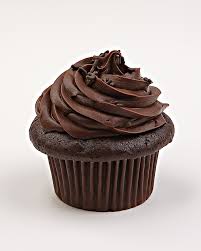
Causes of Chocolate Toxicity in Dogs
Chocolate poisoning is caused by excessive intake of the methylxanthine alkaloids . Methylxanthine alkaloids are naturally occurring drugs (primarily theobromine and caffeine) that can be found in chocolate, coffee, tea, cola beverages and some over-the-counter stimulants.
Chocolate preparations contain different concentrations of these active compounds. One of the methylxanthine alkaloids is an element called theobromine, which is lethal to dogs, and another is theophylline, which is similar to caffeine.
The amount of theobromine found in chocolate is small enough that chocolate can be safely consumed by humans in large quantities, but dogs metabolize theobromine slower and can easily consume enough chocolate to cause chocolate poisoning. Dogs are the most common victims of theobromine chocolate poisoning.
The poisoning affects many organ systems, and animals of all ages are susceptible. These drugs cause constricted blood vessels; rapid and weak heart beat; and stimulate the nervous system. Nervous system stimulation leads to hyperactivity, tremors, and seizures. The heart rate becomes increasingly rapid and irregular. The theobromine will remain in their bloodstream for up to 20 hours.
In most cases, dogs are poisoned by eating the processed chocolate used in sweets, baked goods, and chocolate bars. Since these products contain high concentrations of theobromine and caffeine, and dogs love the way they taste, chocolate poisoning is common because of the way they gobble down just about anything and everything.
Puppies and young dogs are especially susceptible as they may be more likely to ingest large amounts of unusual foods. Since chocolate is very often available and dogs enjoy the taste, access to chocolate goodies has become a real problem, with more and more cases of dog chocolate poisoning on the up-rise.
Chocolate Poisoning in Dog
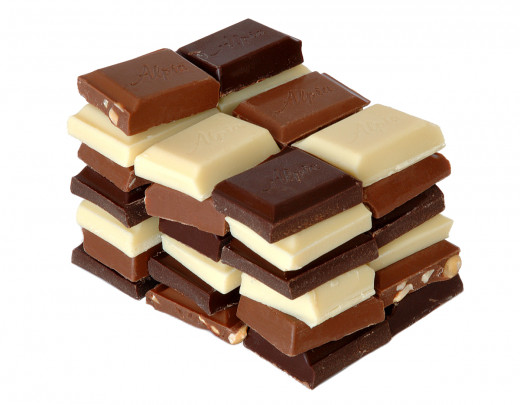
Chocolate Theobromine Quantity Levels
The quantity of theobromine in chocolate will vary with the different varieties of chocolate.
This list begins with the type of chocolate that has the largest quantity of theobromine and moves down to the type of chocolate with the least amount.
- Cocoa Beans
- Baker's Chocolate
- Baking Cocoa Powder
- Dark Chocolate - The higher the percentage of dark chocolate cocoa the more dangerously toxic to your dog.
- Chocolate Cocktail Mixes
- Chocolate Syrup
- Milk Chocolate
- Milk Chocolate Powder Mixes - Made into chocolate milk.
- Lite Chocolate Syrup
- White Chocolate - White chocolate is not really chocolate. It is mostly sugar with the addition of the chocolate fat solids to give it the chocolate flavor.
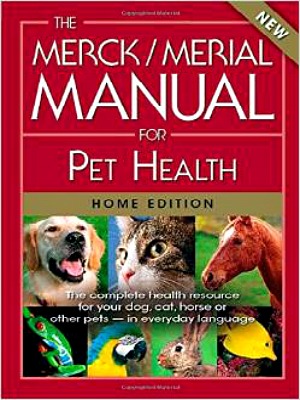
Symptoms of Chocolate Poisoning in Dogs
The first symptoms of chocolate poisoning in dogs include nausea, vomiting, diarrhea, and increased urination. These symptoms will occur 2 to 4 hours after intake, and chocolate in the vomit may be obvious. Excessive urination may result from the diuretic (water clearing) action of the chocolate.
Advanced signs of chocolate poisoning include cardiac arrhythmias, hallucinations, stiffness, epileptic seizures, muscle twitching, excitement, extreme responses to noise, light, and touch.
Internal bleeding, heart failure, weakness, coma, and eventually death can occur 12 to 36 hours after intake.
Chocolate poisoning can be confused with many other types of poisoning or conditions. Life threatening chemical poisoning can cause very similar effects.
Chemicals such as strychnine, amphetamines, pesticides, and some rodenticides can have mirror effects.
A typical 40 pound dog will normally experience intestinal distress after eating less than 8 ounces of dark chocolate, but won't necessarily experience bradycardia (a slow heartbeat rate) or tachyarrhythmia (an increase in heart rate) unless it eats at least a pound of milk chocolate.
According to the "The Merck/Merial Manual for Pet Health", approximately 0.023 ounces of baker's chocolate per pound of a dog's body weight is sufficient to cause symptoms of toxicity. For example, a typical 1 ounce baker's chocolate piece would be enough to bring out symptoms in a 40 pound dog.
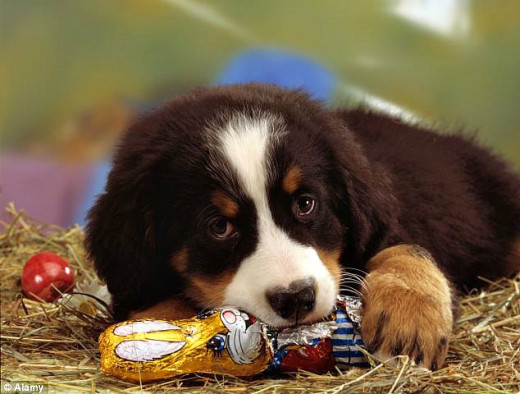
My Dog Ate Chocolate - Now What?
The Steps To Take If Your Dog Should Eat Chocolate
If a dog eats chocolate, immediate induction of vomiting is the best. This can only be done within the first two hours of ingestion. Vomiting can be induced by putting a small amount of vanilla ice cream in a bowl (for taste!) mixed with hydrogen peroxide (amount depends on the weight of the dog) and a teaspoon of salt.
Whatever you do, DO NOT induce vomiting with salt water. You will induce salt toxicity instead of vomiting, which can cause seizures.
Save a sample of the vomit, for analysis, and take both the dog and the sample to the veterinarian immediately.
If, on the other hand, your dog is having a seizure, do NOT attempt to induce vomiting.
Call your veterinarian immediately for advice, before bringing him in to the clinic.
If a combination of chocolate ingestion, vomiting, nervousness, or weakness are seen, take your dog to your vet immediately and again, if possible, bring a sample of the vomit with you for analysis, since this may aid in rapid identification of the toxic substance.
Your veterinarian will examine your dog's nervous system and cardiac function. He may want to test the blood and urine for concentrations of sugar(glucose) and the active ingredient in the chocolate.
Chocolate poisoning in dogs progresses rapidly and symptoms may need to be treated symptomatically until a laboratory diagnosis is confirmed.
If you dog is a medium size to large size dog that has gotten a little bit of chocolate ice cream. I wouldn't be too concerned as there is very little chocolate there. It is mostly milk and sugar. With a smaller dog I would keep a close eye on him.
What Happens When Your Dog Eats Chocolate And Is Taken To The Vet. This Is Necessary.
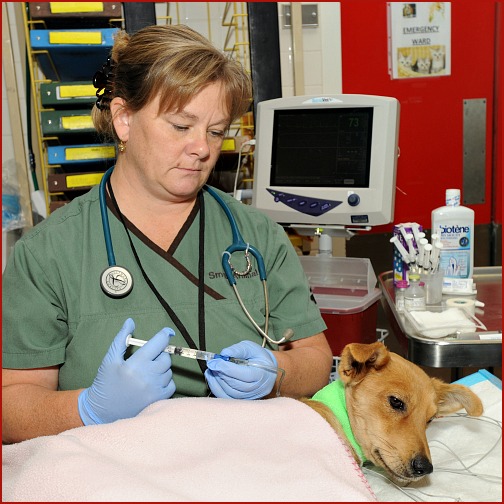
Cure for Dog Eating Chocolate
There is no antidote
There is no antidote for chocolate poisoning.
Your veterinarian may use drugs to induce vomiting if the chocolate was consumed within the previous 2 - 4 hours.
He may also use a stomach tube and fluids to flush the stomach of the chocolate, followed by an activated charcoal treatment, to prevent any of the drugs from being absorbed into the system.
In dogs with advanced symptoms, specialized medications are needed to control the seizures and to correct the rapid and weak heartbeat in order to prevent heart failure.
Prognosis of Chocolate Toxicity for Dogs
The expected course of chocolate poisoning is 12 to 36 hours depending on the dosage and effectiveness of treatment.
Prognosis is good if the chocolate is removed within 2 to 4 hours of ingestion. Prognosis is guarded in animals with advanced signs such as seizures and serious heart dysfunction.
Would You Take the Chance Feeding Your Dog Chocolate?

Keep an Eye on Your Dog at Holiday Gatherings
For every holiday, such as Halloween, Thanksgiving, Christmas, Valentine's Day, Easter and Mother's Day, veterinarians witness an increase in accidental chocolate poisoning in dogs.
The majority of pet owners do not realize that their homes are a potential for dog disasters and leave chocolate easily accessible for their dogs.
Keep in mind that theobromine, caffeine and theophylline molecules which are all naturally occurring molecules that are toxic to dogs are found in several foods, plants, beverages and medications.
How Much Chocolate Can a Dog Eat Without Harm?
10 Steps to Keeping Your Dog Safe During Holiday Parties
- Keep dangerous substances up and away from your pets. For instance, common plants such as azaleas, rhododendron, and foxglove can all cause heart failure in your dog if ingested.
- Do not leave food unattended. Dogs definitely have a sweet tooth and even a well trained dog may be tempted to snatch a treat, counter-surf, or raid the inside of garbage containers, as well as the outside garbage can, when no one is paying attention.
Make sure garbage and leftovers are safely disposed of right away. Put a heavy item on all outside garbage can lids so that stray or wild animals cannot get into the trash as well.
- Dog-proof your home to keep your dog safe. No chocolate of any kind should ever be given to your dog and it should be kept well out of his reach. All chocolate should be kept in closed containers on high shelves in latched cupboards.
Raisins, grapes, macadamia nuts, onion, onion powder, apple seeds and pear seeds are all toxic to dogs.
- During social gatherings, remember to advise your guest, both kids and adults, not to give your dogs anything except their normal treats. Rich foods may cause a painful pancreatic reaction, and guests may not be aware of the dangers that are obvious to you.
Some people are under the false impression that a dog can eat anything. Kindly show them what treats are available for them to feed Fido.
- When having a party, if at all possible, keep your dogs in a separate room with some toys and a comfortable place to lie down. Play some soft music, especially classical, to help them relax, and keep them distracted from the noise of the party.
Pets that have their own room will feel safer, less stressed, and won't be able to accidentally escape to the buffet table or out the front door.
- If the holiday you are celebrating involves wrapped gifts, and you have a chewer in house, keep the gifts up off the floor and on a table out of reach. Puppies chewing on ribbon can choke and /or get strangled.
- Halloween decorative lights and Christmas tree lights may create an electrical hazard to your dog. Keep them out of the dogs reach.
If the Christmas tree is too large to put up on a table away from the dog, then make sure that the wires from the lights are not hanging down where they can be grabbed by the puppy to chew.
- Keep glass ornaments and tinsel, being used during the Christmas season, up and out of reach on higher branches. Puppies can again choke on the tinsel and glass ornaments tend to break. You don't want your Great-Grandmother's heirloom ornaments broken, nor do you want your puppy swallowing broken glass.
- Consider getting Dog Insurance to protect yourself and your pup against any unforeseen circumstance that may arise.
- Lastly, keep current identification on your dog at all times. With holiday parties and guests abounding, your pet may have more opportunities to escape. Buy a new Pet ID Tag with personalized engravings for your pet.
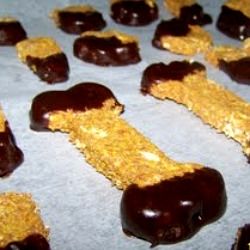
Is Carob a Safe Alternative to Chocolate?
Carob is a safe and healthy chocolate alternative. FOR HUMANS. Carob will not harm your dog, however, I must do my duty to the safety of all dogs and warn against feeding it to your puppies as a treat.
No, the carob will not harm the dogs, but unlike humans, dogs do not have the ability to use rational thinking. They will only go by their senses. To a dog, there isn't any difference in chocolate or carob. They both taste and smell the same, like milk chocolate.
If you give your dog carob biscuits, cookies, or other carob treats, they will want more of it and they don't have the ability to tell the difference between carob and chocolate.
It would be far too easy for a dog that is use to the taste and smell of carob to go into the garbage and eat chocolate that someone has thrown out. It would be far to easy for them to sneak a piece of chocolate cake off of the table because they think it is something you have fed them before.
In my opinion, it is better to avoid giving them carob altogether rather than introducing something that smells and taste like chocolate. It will only to add confusion to your animal when one is allowed and the other isn't.
On the Respect Life Eat Veggies Blog there is a recipe for "Pumpkin Dog Biscuits" (pictured in the photo above right). The owner of the blog made these Pumpkin Dog Biscuits for her pups and they wouldn't eat them, so she dipped them in melted carob and of course the puppies loved them. If you use this recipe instead of the one on her blog, your dogs will love them without having to introduce them to carob.
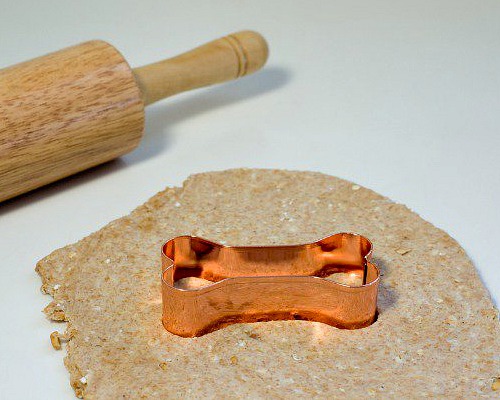
Copper Dog Bone Cookie Cutter Set
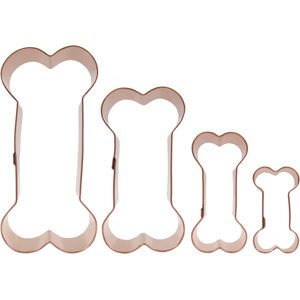
Make Your Pups Healthy Treats They Will Love
Pumpkin Dog Biscuits
2 cups whole wheat flour
1 tablespoon brown sugar
1/2 teaspoon ground cinnamon
1/2 teaspoon ground nutmeg
4 tablespoons bacon fat
1/2 cup pumpkin, canned
1 whole egg
1/2 cup buttermilk
Preheat oven to 400 degrees. Combine flour, cinnamon and nutmeg and cut in bacon fat like you would shortening. Beat egg with milk and pumpkin and combine with flour, mixing well. Stir until soft dough forms. Drop by tablespoons onto an ungreased cookie sheet and bake for 12 to 15 minutes. Let cool and serve and to your dog.
Keep the extra in an airtight container.
Note: You could also roll the dough to about a 1/4-inch thickness on a lightly floured surface,and cut with a dog bone shape cookie cutter and bake at 350 degrees for 20 minutes.
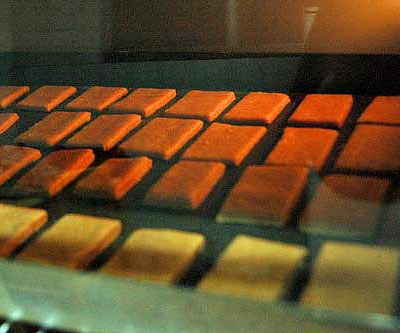
Sammi's Salmon Dog Treats
Ingredients:
1 8-oz. can Salmon with juice
1/2 cup of Parsley - chopped
3 eggs
1/2 cup sesame seeds
1/2 cup flax seeds
2-3 cups of Whole Wheat Flour
Preparation:
1. Preheat oven to 375F (190C)
2. Grind the Flax & Sesame seeds in a grinder, preferably a coffee grinder so they are finely ground.
3. Then mix all of the ingredients (except the flour) in a food processor and mix well.
4. Mix in the flour by pouring it in slowly and pulsing until the dough forms a ball.
This normally takes somewhere between 2-3 cups of flour.
5. Add a little flour to your table top and knead in the remaining flour so you get the dough smooth and no longer sticky. This should take you about 3 - 4 minutes.
6. Roll out the dough to about 1-in (2 cm) thick.
7. Cut the dough vertically, using a pizza cutter, about 1-in.(2 cm) between each cut.
8. Then cut horizontally, again about 1-in.(2 cm) apart.
9. This should form small squares.
10. Place them on a grease baking sheet.
11. Bake for about 20 minutes then flip them and bake for another 10 minutes or until golden brown.
12. Remove from oven and cool on a wire rack before feeding them to your dog.
13. You can make the treats as hard or soft as you like, although crunchy is better for their teeth.
Did You Learn Anything About Keeping Your Dog Safe and Healthy?


